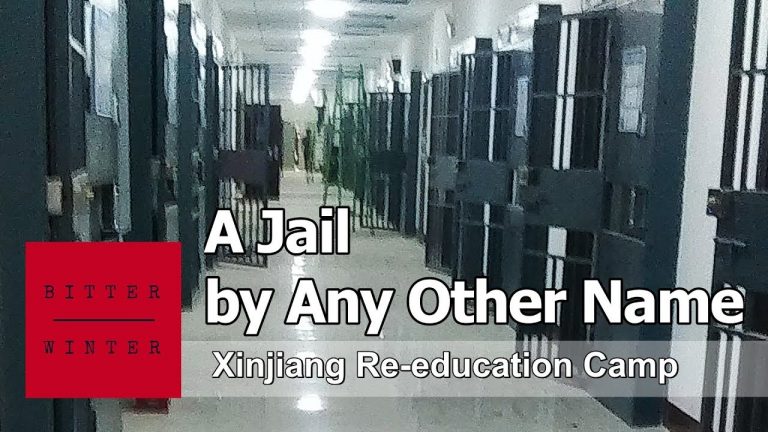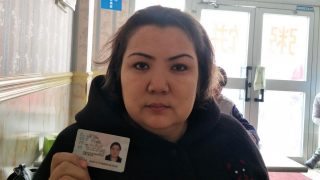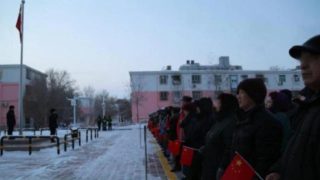A video clip asking 100 Uighur women to “urgently” sign up for intermarriage with Chinese men has been circulating on social media platforms in recent weeks, with observers and Uighur human rights activists calling it another attempt by the Communist Party of China (CCP) to Sinicize the Turkic-speaking ethnic groups in Xinjiang region.
The 30-second video advertisement first appeared on Douyin, the Chinese version of TikTok, but was later deleted following a social media campaign by Uighur human rights activists abroad. Uighur activists have since posted the video on other platforms such as Twitter and Facebook, saying it sheds light on Beijing’s policy to eradicate the Uighurs’ distinct culture.
“We thank the government and the party for creating this beautiful life,” the video begins in Uighur, saying its “urgent” call to organize 100 Uighur brides is “giving voice to the government’s promotion of Uighur and Chinese intermarriage.”
According to Darren Byler, a Seattle-based anthropologist and China expert at the University of Washington, the attempt by Chinese authorities is sharply gendered around marriage between Chinese men and Uighur women, indicating that “a certain racialized power dynamic is a part of this process.”
“It does seem as though this is an effort to produce greater assimilation and diminish ethnic difference by pulling Uighurs into Han-dominated relationships,” said Byler, adding that intermarriage has become a priority of local officials in Xinjiang.
Intermarriage policy
Reports about China’s promoting intermarriage between Uighurs and Han Chinese go back to as early as August 2014 when local authorities in Cherchen county of Xinjiang announced, “Incentive Measures Encouraging Uighur-Chinese Intermarriage.”
The measures laid out a set of incentives by the government, including a 10,000 yuan ($1,450 US) cash reward annually for five years to the intermarried couples. The incentive package also included preferential treatment toward employment, housing and free education for the couples, their parents and offspring.
“Our advocacy of intermarriage is promoting positive energy,” said Zhu Xin, the Chinese Communist Party secretary of Cherchen county, while introducing the incentive measures.
“Only by promoting the establishment of a social structure and community environment in which all ethnic groups are embedded in each other … can we boost the great unity, ethnic fusion and development of all ethnic groups in Xinjiang, and finally realize our China dream of great rejuvenation of our Chinese nation,” Zhu added.
In a January article on the Chinese site NetEase, Mau Tao, a CCP official in Guma county of southern Xinjiang, said that “religious extremism” was behind the lack of ethnic unity between Uighurs and Han Chinese. He said that 2000 and 2010 national censuses showed that Xinjiang had the lowest rate of interethnic marriage among ethnic minorities.
“The main obstacle to Uighur-Chinese intermarriage is that the infiltration of religious extremism has changed the social environment, and that the ‘three forces’ have destroyed ethnic relations,” Tao said, referring to Beijing’s claim that Xinjiang is home to “three forces of evil,” namely separatism, terrorism and extremism.
Intermarriage videos
Years into the announced policy, Uighur activists on social media have shared dozens of videos, reportedly showing Uighur women “forcefully” wedded to Chinese men. The videos sometimes show the gloomy Uighur brides appearing to begrudge their grooms.
However, in a rare video posted July 12 on its official Twitter account, China’s state media outlet, the People’s Daily of China, displayed the story of a Uighur man dating a Chinese woman.
The man, the People’s Daily of China said, was “one of numerous young people in NW China’s Xinjiang who pursue love earnestly.”
Demographic change
While Chinese authorities say intermarriage in Xinjiang could promote tolerance and peace in the region, Uighur diaspora leaders call it a part of CCP’s effort to erode the Uighur identity and change the demographics of the region.
Home to more than 13 million Muslims such as Uighur, Kazakh and other ethnic groups, Xinjiang has witnessed a dramatic increase in Chinese population, from just more than 200,000 in 1949, when the CCP’s Liberation Army took over the region, to almost 9 million in recent years.
“This CCP policy is also an attempt to solve the problem of the massive surplus of Chinese men, compared to the number of women. It appears they are advertising Uighur women as a solution to find Chinese men wives,” Dolkun Isa, president of Munich-based World Uyghur Congress, told VOA.
Because of China’s one-child policy and widespread use of abortion targeting female babies in preference of male babies, there are reportedly far more men in China than women.
Isa said that China is trying to “rewrite history” by assimilating Uighur minority female members into the dominant Han Chinese community.
Forced intermarriage
Some Uighur activists claim that Uighur women are often coerced into those marriages. If they refuse, authorities in Xinjiang could label them and their families as extremists.
Zumrat Dawut, 38, a Uighur female activist, told VOA that her neighbors, the Nurehmets from Mekit, Xinjiang, had to agree to wed their 18-year-old daughter to a Han Chinese out of fear that they could be sent to internment camps.
Dawut was held in an internment camp in Urumqi, the capital of Xinjiang, in 2018 before her husband helped secure her release and moved her to Woodbridge, Virginia.
She told VOA that after her neighbors returned to Mekit, the father, Nurehmet, was sent to an internment camp on charges of religious extremism for growing a beard. The daughter, Ayjamal, had to work in a factory where a Chinese man approached her and took a picture with her.
“Later the mother, Guljamal, was visited by local government officials. The officials showed her the picture of her daughter with the Chinese man as a proof of them dating and demanded that she should give her consent to the intermarriage,” Dawut said, adding that the mother and daughter agreed to the demand to avoid incarceration.
Intermarriages ‘theory’
Beijing in the past has launched similar intermarriage campaigns, targeting other ethnoreligious minorities in the country. The government announced such measures in Tibet in 2010.
Vanessa Frangville, a China studies professor at the University Libre of Brussels, said China’s intermarriage is a part of “ethnic blending theory” that has been developed by Hu Angang and Hu Lianhe from Tsinghua University since early 2000s. The theory calls for measures such as co-residence, intermarriages and mixed-ethnic schooling as a way to enforce a more united Chinese identity.
“The end goal of such policy is clearly to enforce or accelerate ethnic fusion — minzu ronghe, in their words,” said Frangville, adding “the idea is that, to create a cohesive and united China, it is necessary to encourage people from various ethnic backgrounds to mix together.”
Source: VOA



